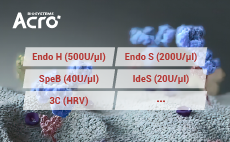1. Huge drug market for HBV
(1) In 2016 global HBV prevalence is 3.9%, with 292m cases, within which 32% of cases were in need of therapies. In 2017, 870,000 people have been dead from HBV. 25% of HBV patients develop HCC.
(2) Patients receiving Long-term treatment with the current therapies easily relapse after off-treatment. And uncleared HBsAg causes an unexpected immune reaction for a long time. A low functional cure rate is a big challenge for HBV therapy, and new strategies are in need to reform HBV therapy.
2. Capsid assembly inhibitors are a viable strategy for HBV
Capsid assembly inhibitors bind to the dimer-dimer interface and disrupt the formation of functional nucleocapsids, blocking several steps of the HBV life cycle including entry, replication, assembly and secretion and preventing the maturation of infectious viral particles.
3. A second general capsid assembly inhibitor with better anti-HBV activity than contemporary competitors in vitro.
(1) The EC50 and EC90 of asset are both at nanomolar lever, which are 10–100 times lower than that of competitors(AB-506, JNJ-379, NVR3-778 and HBI-0731) in vitro.
(2) Asset shows more potent inhibition of HBV replication, especially HBeAg and HBsAg in PHH infection model, compared with ETV.
4. Excellent active HBV ability in vivo.
(1) In the HDI mouse model, the asset shows a dose-dependently reduction of serum and liver HBV DNA, illustrating an excellent antiviral activity.
(2) The asset is more potent in reducing the viral antigen in vivo.
5. Good safety.
(1) Low CYP enzyme induction in preclinical study. The combination of asset and ETV in the phase IIb study accelerated HBV
(2) High safety window remains greater opportunity for curative combination therapy, which strategy is high up the functional cure rate.
1. Asset type: Capsid assembly Inhibitor
2. Indication: HBV
3. Research phase: Phase 1
4. Cooperation demands: License-out or co-development
5. Research progress:
a) Phase 1 trial is ongoing.
b) Excellent antiviral effect in vitro and in vivo.
c) Large safety window, suited for combination therapy

Explore our catalog of therapeutic antibody solutions to find the right products for you! We are dedicated to delivering solutions designed to help you drive innovation and push the boundaries of what therapeutic antibodies can be.

Organoid Toolbox is a collection of organoid solutions including ready-to-use organoids, organoid differentiation kits, and a variety of services to accelerate the progress of your drug development project.

To enable antibody characterization methodsACROBiosystems has developed a series of enzymes.such as ldeS, SpeB, EndoH, and Endo S proteases, toassist with the characterization of antibodies and theirrelated post-translational modifications (PTMs)

ACROBiosystems developed a series of GMP grade cytokines under the GMP grade quality management system. Those products are all suitable for T/NK cell generation, activation, and proliferation in cell therapy research.

50+ targets designed for CAR detection, including PE/FITC/biotin labeled proteins. The key reagents for CD19 and BCMA were FDA DMF filed which can support your IND, NDA and BLA process.

GMP grade cytokines, reagents for cell activation, gene edition, DNA/RNA removal, etc. Particularly focus on product design, quality control and solution-based support to link each phase of your cell and gene therapy journey.

Full length multi-pass TPs with stabilized structure and high bioactivity for immunization, antibody screening, cell based assay and CAR detection, including hot CD20, Claudin 18.2, CD133, GPRC5D,CCR8, CCR5, etc.

A series of immune checkpoints including classic co-inhibitory and co-stimulatory receptors. The comprehensive catalog contains 100+ targets with various species and tags, and the high-quality proteins are in good batch-to-batch consistency.

To meet the needs of ADCs development, ACROBiosystems can provide: A variety of high-quality target proteins; MMPs/Cathepsin/uPA for cleavable linker; Anti-payload antibodies & anti-idiotypic antibodies for immunogenicity and PK analysis; SPR/BLI analytical and ADA development service.

Comprehensive collection of Fc receptor proteins, including their common variants, which can help expedite your antibody development.

Comprehensive cytokine targets including interleukins, growth factors, chemokines, TNFs, etc. are expressed by HEK293 to ensure their natural structure. Their high purity is verified by SDS-PAGE/HPLC/SEC-MALS and high bioactivity is verified by ELISA/SPR/BLI.

Aneuro provides innovative solutions for neuroscience research. Recombinant proteins, neural factors, pre-formed fibrils, electrophysiological electrodes, as well as Organoid Toolbox all in Aneuro aiming to advance neuroscience research, develop therapeutic interventions, and improve diagnostic methods for neurological diseases.
This web search service is supported by Google Inc.
